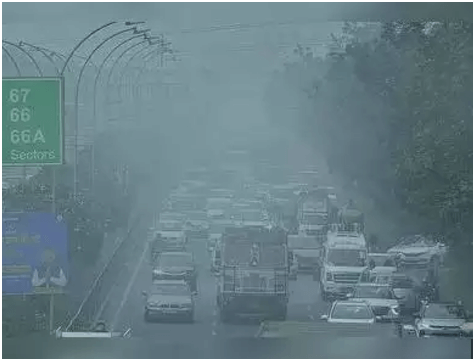Delhi air quality continues to be a significant concern as the city struggles with pollution levels that remain firmly in the ‘very poor’ category.
According to the most recent data, the Air Quality Index (AQI) stands at 371. While this number is an improvement from the ‘severe’ levels that plagued the region in recent days, the city’s atmosphere still poses health risks for vulnerable populations. The deterioration in air quality is an annual occurrence in Delhi, often triggered by a mix of seasonal changes, local pollution sources, and broader environmental factors that combine to create hazardous conditions.
Several factors contribute to Delhi’s persistent pollution problems. One of the most prominent is the seasonal agricultural stubble burning in neighboring states such as Punjab and Haryana. During the winter months, farmers set fire to crop residues to clear fields for the next planting season, a practice that releases vast amounts of particulate matter into the air. These particles, coupled with Delhi’s own emissions from vehicles, industries, and construction, contribute to the city’s annual air pollution crisis. Despite efforts to curb this practice, stubble burning continues to be a challenge, significantly impacting air quality in the capital.
Delhi’s geography also plays a role in the severity of its air quality problems. The city is landlocked, and its topography does not facilitate the dispersion of pollutants. This, combined with cooler temperatures in winter, leads to a phenomenon known as temperature inversion. In this situation, a layer of warm air traps colder air and pollutants close to the ground, preventing them from dispersing. This creates a dense smog that hangs over the city, reducing visibility and causing a spike in respiratory problems among residents.
Vehicular emissions remain another major contributor to Delhi’s air pollution. With a rapidly growing population and an increasing number of vehicles on the road, the capital faces the constant challenge of managing emissions from cars, buses, and two-wheelers. Although measures have been introduced to control traffic pollution, such as stricter emission norms and the promotion of electric vehicles, the sheer volume of vehicles makes it difficult to achieve a significant reduction in pollution levels. Congestion on the city’s roads exacerbates the problem, as idling vehicles emit more pollutants, further degrading the air quality.
Industrial emissions add to the pollution load, with many factories and small-scale industries operating in and around Delhi. While regulatory bodies have enforced standards and penalties for violations, compliance remains inconsistent. During the winter months, some industrial units also increase the use of polluting fuels like coal to meet higher energy demands, contributing to the seasonal spike in particulate matter. Efforts to move industries towards cleaner energy sources are ongoing, but progress is gradual and often hampered by economic and logistical challenges.
Construction dust is another significant source of pollution in Delhi. The city’s rapid urbanization and the constant demand for new infrastructure result in extensive construction activity. This produces large amounts of dust, which contains fine particles that are harmful when inhaled. To mitigate this, the government has implemented measures like covering construction sites, spraying water to settle dust, and using anti-smog guns. However, enforcement can be lax, and the scale of construction makes it difficult to fully control the problem.
The health impacts of Delhi’s poor air quality are well-documented. Respiratory illnesses, cardiovascular diseases, and aggravated asthma symptoms are common among the city’s residents, particularly during the winter months. Children, the elderly, and those with pre-existing health conditions are especially vulnerable. Hospitals often report a surge in cases related to respiratory distress, and the long-term exposure to polluted air has been linked to increased risks of lung cancer and other chronic conditions. The city’s air pollution also has broader implications for public health, placing a burden on healthcare systems and reducing overall quality of life.
In response to the persistent air quality issues, the Delhi government and the central authorities have taken several steps to mitigate pollution. One of the key initiatives is the Graded Response Action Plan (GRAP), which involves a series of measures that escalate based on the severity of pollution levels. These measures include restrictions on construction activities, bans on diesel generator sets, and the closure of brick kilns during peak pollution periods. Additionally, during days of extremely high pollution, schools may be closed, and odd-even traffic schemes are sometimes implemented to reduce the number of vehicles on the roads.
Stay informed with the latest updates – click here .

